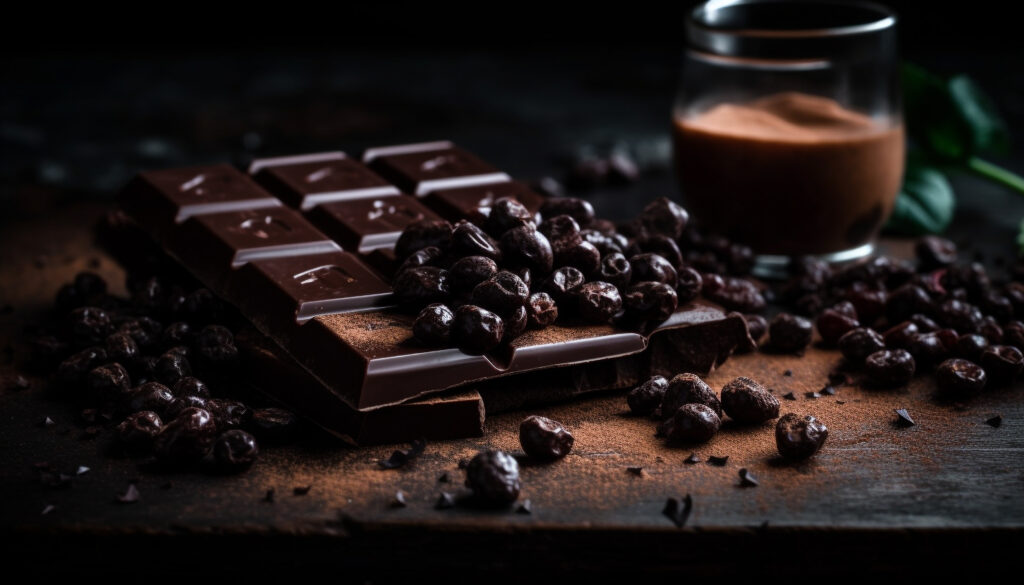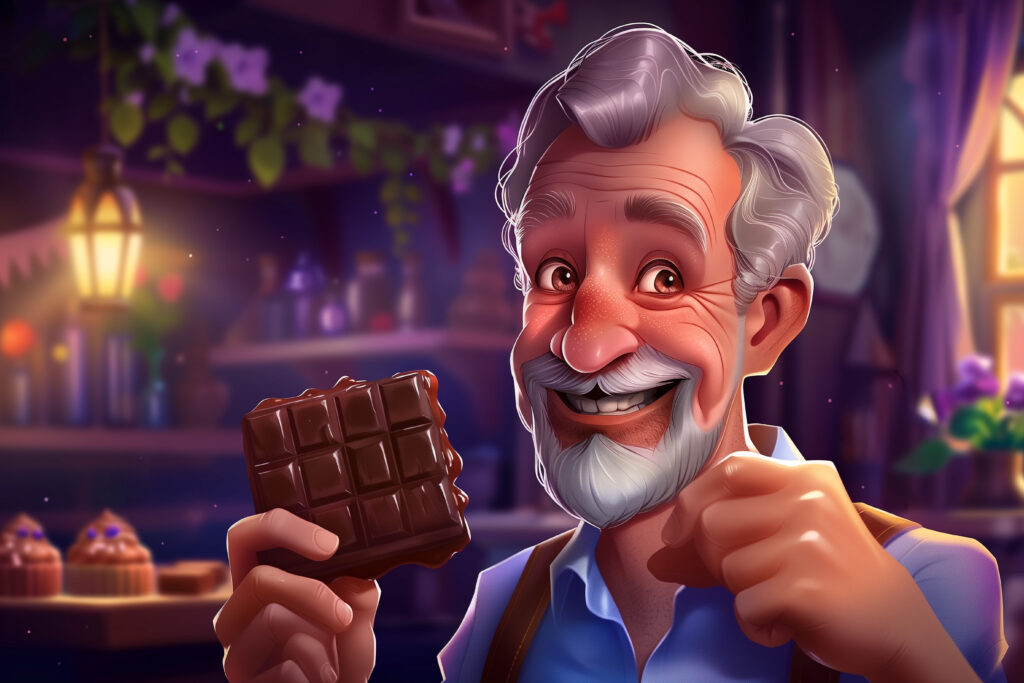Dark chocolate isn’t just a treat—it’s an experience. The rich flavor, deep aroma, and smooth texture make it one of the most beloved indulgences worldwide. But with countless brands and varieties on the market, finding the best dark chocolate is no simple task. This guide explains how to identify truly premium chocolate, why it matters for your health, and how to enjoy it like a connoisseur.
What Makes Dark Chocolate “The Best”?
The best dark chocolate is defined by purity, flavor complexity, and ingredient quality. A great bar typically contains only three things: cocoa mass, cocoa butter, and sugar. Lesser brands add vegetable oils, fillers, or artificial flavors that compromise quality.
The cocoa percentage matters too. Chocolate with 70–85% cocoa is considered ideal for both taste and health. At this level, you’ll get a bold cocoa flavor without overwhelming bitterness.
The sourcing also plays a huge role. High-end chocolatiers use beans grown in specific regions where soil and climate give unique flavor notes—like fruity hints from Madagascar cocoa or nutty tones from Ghanaian beans.
How to Judge Quality Before You Buy
Premium chocolate doesn’t have to be a mystery. By looking closely at the packaging and using a few quick tests, you can instantly tell if a bar is top-tier.
First, check the ingredients. If you see anything beyond cocoa mass, cocoa butter, and sugar—such as palm oil or artificial vanilla—it’s not true premium quality.
Second, observe its appearance. When you break a high-quality bar, it should have a clean, crisp snap and a glossy finish. Dull surfaces or streaks may indicate poor storage or rushed tempering.
Finally, smell and taste matter most. Good dark chocolate will have an inviting aroma and a lingering, balanced flavor—not one that disappears in seconds or leaves a chalky aftertaste.
The Health Benefits of Dark Chocolate
One reason so many people seek the best dark chocolate is because it’s one of the rare indulgences that can actually be good for you.
Dark chocolate is rich in flavonoids, natural compounds with antioxidant properties that fight free radicals and reduce inflammation. Eating it in moderation may improve heart health by lowering blood pressure and improving blood circulation.
It also contains minerals like magnesium, iron, and copper—vital for energy production and overall wellness. Some studies suggest dark chocolate can even boost brain function, helping you stay focused and alert.
But remember: even the healthiest chocolate is still calorie-dense. A couple of small squares per day is enough to enjoy its benefits without going overboard.
The Role of Cocoa Origins in Flavor
Cocoa beans grown in different regions produce completely different tasting chocolate. This is why true chocolate lovers pay attention to bean origins.
For example, Venezuelan beans give earthy, nutty notes, while Peruvian cocoa may add subtle floral tones. Madagascar beans often produce fruity, citrus flavors, and Ghanaian cocoa delivers that classic “strong chocolate” taste.
Single-origin chocolate highlights these unique profiles, letting you taste the influence of soil, climate, and farming techniques. By exploring origins, you’ll better understand why some brands consistently produce the best dark chocolate.
Why Craftsmanship Matters
Great dark chocolate isn’t just about good ingredients—it’s about skillful production. From bean to bar, every stage shapes the final product.
Fermentation is the first step. Beans must ferment just long enough to develop complex flavors without becoming too bitter. Next comes roasting, where chocolatiers carefully balance heat to unlock rich aromas without burning delicate notes.
Grinding and conching refine the texture, making the chocolate velvety smooth. Finally, tempering stabilizes the cocoa butter crystals, giving the bar its shiny finish and perfect snap.
Mass-produced brands often rush these steps, while artisan makers take their time. The difference? Chocolate that feels luxurious and tastes unforgettable.
The Experience of Eating Dark Chocolate
Enjoying high-quality chocolate is about more than just eating—it’s about savoring.
Let the chocolate melt on your tongue instead of chewing quickly. As it warms, layers of flavor reveal themselves, from rich cocoa to subtle hints of fruit, coffee, or spice.
Pairing chocolate with drinks can elevate its taste. Red wine, espresso, or even whiskey complement its bold flavors. For lighter pairings, fresh berries or citrus fruits highlight its natural notes.
Proper storage is essential too. Keep chocolate in a cool, dry place away from sunlight and strong odors. Rapid temperature changes can cause bloom—a whitish film that affects appearance but not taste.
Why the Best Dark Chocolate Is Worth the Price
Premium chocolate often costs more, but the difference is real. Better beans, ethical sourcing, and meticulous production mean you’re not just buying a candy bar—you’re supporting sustainable farming and artisanal craftsmanship.
Cheap chocolate may save money, but it’s often loaded with sugar and oils that mask inferior cocoa. In contrast, paying a little more ensures authentic flavor, smoother texture, and health benefits you won’t get from mass-market brands.
Building a Taste for Quality
If you’re new to dark chocolate, start with 60–70% cocoa and gradually move toward higher percentages. As your palate adjusts, you’ll learn to appreciate the deep complexity of high-cocoa bars and eventually discover which origins and brands you love most.
Keeping notes about the flavor, texture, and aroma of different chocolates can help you develop a true connoisseur’s taste. This makes the search for the best dark chocolate both fun and rewarding.

Conclusion
The best dark chocolate is about purity, craftsmanship, and an experience that engages all your senses. It’s made with quality cocoa, minimal additives, and careful attention to detail. From its health benefits to its unmatched flavor diversity, premium dark chocolate is worth exploring and savoring slowly.
By learning how to evaluate ingredients, origins, and production methods, you can confidently choose chocolate that’s not just good—but exceptional. In every bite, you’ll taste the difference between ordinary and extraordinary.
FAQs
1. What cocoa percentage is best for dark chocolate?
Around 70–85% offers a strong yet balanced cocoa flavor.
2. Is dark chocolate really healthy?
Yes, when eaten in moderation due to its antioxidants and minerals.
3. How do I know if dark chocolate is high quality?
Check for a clean snap, glossy finish, and minimal ingredients.
4. Does single-origin chocolate taste better?
It often has unique flavors tied to the bean’s growing region.
5. How much dark chocolate should I eat daily?
One or two small squares is usually enough.
Read Also : The Best Commercials of All Time: A Masterclass in Storytelling and Branding

